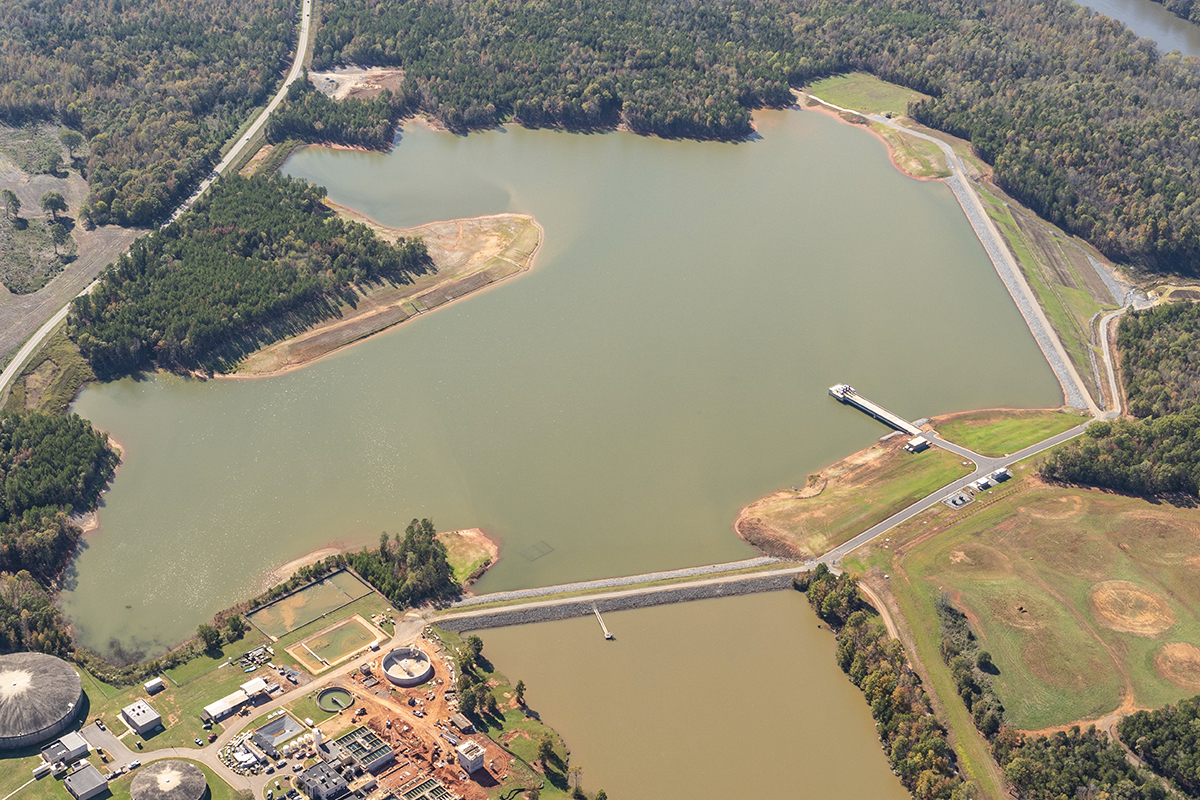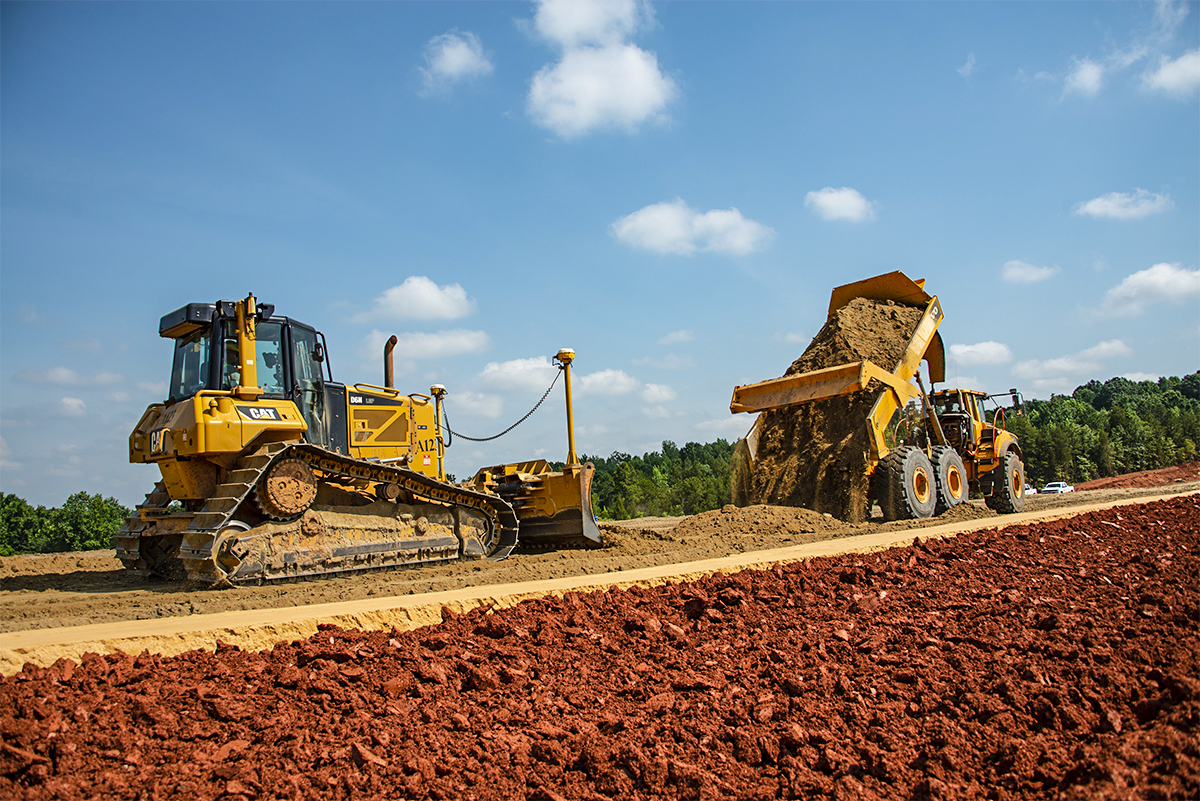
Location
Van Wyck, SC
P&J Role
Prime Contractor
Completion Date
August 2019

Van Wyck, SC
Prime Contractor
August 2019
The Catawba River Water Supply Project is a two-year, off-channel reservoir expansion project that was constructed for a joint venture between Union County Public Works and Lancaster County Water and Sewer District of South Carolina. The scope of work included expanding the existing reservoir and constructing a new pump station, thus adding redundancy and reliability to future treatment operations. The reservoir now provides 1B gallons of raw water storage. The new infrastructure also enables the clients to have additional raw water storage for treatment, mitigating drought concerns and conditions for the future.
P&J was responsible for the construction of the earthen embankment dam and a raw water reservoir pump station at the plant. The dam includes a cement-bentonite cutoff wall to mitigate seepage, which was installed to a maximum depth of 72’ below the footprint of the embankment. All project activities were required to be completed without interrupting the operation of the existing water treatment facilities to maintain reliable service to the Catawba River Treatment Plant’s customers.
P&J began work by clearing the footprint of the reservoir, which was completed approximately one month ahead of schedule. Once the site was cleared, the excavation of the embankment footprint and raw water pump station commenced. As excavation progressed, each type of material was processed for future use on the embankment, which consists of several different material zones to make the core and shell. Vertical chimney and horizontal blanket drains were installed within the embankment and Class B riprap armoring placed on the upstream face for wave protection. A reinforced concrete emergency chute spillway was also constructed. The slope of the existing 3:1 embankment was reduced to a 4:1 slope, during this process blanket drains were installed, and Class B riprap was placed for wave protection.




During construction, P&J crews relied heavily on GPS to accurately place material. GPS-enabled excavators were particularly important in building and placing the two chimney drains within the embankment. To build the drains, P&J modified GPS-enabled excavators by attaching boxes built to the drains’ dimensions. The material for the drains was fed through the box as the excavator traced the path, allowing crews to efficiently build the drains without contaminating surrounding soils.
P&J also installed and maintained dewatering systems and managed erosion and sedimentation controls, along with a project-specific Stormwater Pollution Prevention Plan and National Pollutant Discharge Elimination System permit. Erosion and sediment controls consisted of permanent and temporary sediment basins, sediment tubes, and silt fence installation. A stormwater bypass was also installed during the dam construction to convey stormwater from the future impoundment while the dam was being built.
The 85′-tall concrete tower and associated bridge required mass concrete thermal control. CTL Group was contracted to design a thermal control plan for the tower foundation and walls, bridge footings, columns and cap placements. The specification for mass concrete limited the maximum temperature after placement to 158 degrees F and the maximum temperature differential from the interior to the exterior of the concrete of 35 degrees F. Insulation on the exterior formwork and on the concrete surface was used to control the temperature differential. Ice and placement early in the morning starting at 2 a.m. was used to control the maximum temperature after placement. Thermocouples were installed in each pour to monitor maximum and differential temperatures. The thermal control plan was utilized very successfully for the mass concrete.




Materials management was also a challenge and required constant communication. The design of the embankment itself included five different zones. Materials for two of these zones were sourced from the site, while the other three were imported, and each of these materials had to be kept completely separate during concurrent work. Four separate crews had to work together to manage materials and ensure that no zone of the embankment was contaminated by another. The P&J team had to be meticulous while importing and placing materials at the same time.
AWARDS
